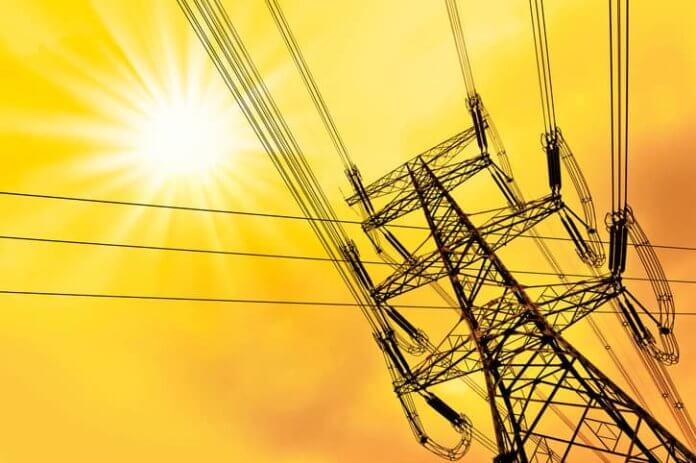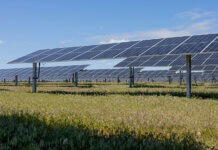PacifiCorp has released a draft of its long-term energy plan, which continues investments in new wind generation and transmission while adding significant new solar and storage resources. In total, the plan includes approximately 7 GW of new renewable energy and storage by 2025.
The plan is the result of a comprehensive data analysis and stakeholder input process, says PacifiCorp. The electric power company serves 1.9 million customers in the Western U.S. through its Pacific Power and Rocky Mountain Power business units.
The draft “preferred portfolio” for the company’s 2019 integrated resource plan (IRP) indicates how it envisions meeting customer energy needs most cost-effectively over the next 20 years. PacifiCorp will file its final 2019 IRP with state regulatory commissions by Oct. 18.
The draft 2019 resource plan includes the following additional renewable energy resources:
Wind
- More than 3,500 MW of new wind generation by 2025, including resources acquired through customer partnerships, and a total of more than 4,600 MW of new wind generation by 2038, including:
- More than 1,500 MW of new wind generation that is currently under construction, including new wind projects in Wyoming as part of the company’s Energy Vision 2020 initiative
- 1,920 MW of additional new wind generation in Wyoming by 2024
- 1,100 MW of new wind generation in Idaho in the 2030-2032 time frame
Solar and storage
- Nearly 3,000 MW of new solar by 2025, including resources acquired through customer partnerships, and more than 6,300 MW of new solar by 2038
- Nearly 600 MW of battery storage by 2025 and more than 2,800 MW of battery storage by 2038
The 2019 draft resource plan identifies battery storage as part of a least-cost portfolio for the first time. All of the storage resources planned by 2025 are paired with new solar generation. The plan adds nearly 1,400 MW of stand-alone storage resources starting in 2028. The new solar and storage resources added over the planning period include as follows:
- 3,000 MW of new solar in Utah paired with 635 MW of battery storage, phased in between 2020 and 2037
- 1,415 MW of new solar in Wyoming paired with 354 MW of battery storage, phased in between 2024 and 2038
- 1,075 MW of new solar in Oregon paired with 244 MW of battery storage, phased in between 2020 and 2033
- 814 MW of new solar in Washington paired with 204 MW of battery storage, phased in between 2024 and 2036
PacifiCorp notes that renewable energy total capacity includes 799 MW acquired through customer partnerships supported by the purchase of 100% of renewable attributes generated by those resources, resources to be used for renewable portfolio standard compliance, and resources where a portion of the renewable attributes are sold to customers, third parties or are excluded from energy purchased.
Transmission
To facilitate the delivery of new renewable energy resources to PacifiCorp customers, the plan calls for the construction of a 400-mile transmission line, known as Gateway South, connecting southeastern Wyoming and northern Utah. The new line will be in addition to the 140-mile Gateway West transmission segment in Wyoming, currently under construction. The plan also includes several other transmission upgrades across PacifiCorp’s system to enable new renewables and increase supply reliability and resilience.
“By investing in transmission, we can extend the reach and flexibility of the grid so more low-cost energy can be delivered to our customers,” says Chad Teply, PacifiCorp’s senior vice president for business policy and development. “Making the necessary long-term investments to relieve transmission congestion will allow development of additional renewable resources in the near term and facilitate long-term growth of the region.”
Coal retirements
Of the 24 coal units currently serving PacifiCorp customers, the draft plan envisions the retirement of 16 of the units by 2030 and 20 of the units by the end of the planning period in 2038. The retirements will reduce coal-fueled generation capacity by nearly 2,800 MW by 2030 and nearly 4,500 MW by 2038.
Coal unit retirements scheduled under the resource plan are:
- Jim Bridger 1 in 2023, instead of 2037
- Naughton 1 and 2 in 2025, instead of 2029
- Craig 2 in 2026, instead of 2034
- Colstrip 3 and 4 in 2027, instead of 2046
- Jim Bridger 2 in 2028, instead of 2037
The 2019 draft plan assumes the following units will continue to run until the retirement dates assumed in the 2017 IRP: Naughton 3 (2019); Cholla 4 (2020); Dave Johnston 1-4 (2027); Hayden 1-2 (2030); Huntington 1-2 (2036); and Jim Bridger 3-4 (2037). The draft preferred portfolio also includes the conversion of Naughton 3 to natural gas in 2020, which will help cost-effectively maintain system reliability as coal units retire and additional renewable resources are added, notes PacifiCorp.
PacifiCorp says it develops and seeks regulatory acknowledgement of its long-term resource plans every two years to account for changing market conditions, new policies and other factors that determine the least-cost resource portfolio. For the 2019 IRP, state regulators will evaluate and consider the resource decisions in the preferred portfolio, including the identified closure dates for the coal units in the plan.
“We are mindful that these resource decisions impact our thermal operations employees, their families and communities,” Teply adds. “Our top priority is making certain our employees and communities remain informed about the changes ahead and that we work in concert with everyone involved to develop plans that help them transition through this time of change.”




